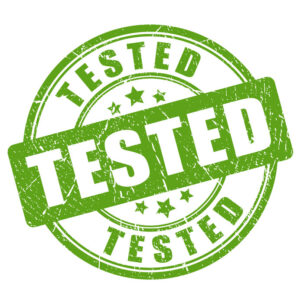By Dr. Ken Broda Bahm:

When you test a product to assess its performance and safety, of course you have very substantive reasons for doing that: You are aiming to check effectiveness, prevent harm, and protect the brand. When a trial occurs, however, that testing carries a symbolic message as well, with the message being that the manufacturer and seller is caring, careful, and serious. Even if something went wrong, and even if in hindsight there was some element that was incomplete in the testing, it still bolsters the company’s trial message to show that it has a comprehensive focus on product safety. In a dispute between an individual and a corporation, the latter is generally the party with greater perceived power and resources, so even if the product users could have better protected themselves by exercising greater care or by heeding product warnings, jurors may still see the company as the party who could have avoided the injury.
It is not my goal to advise on testing itself — that is the work of engineers and specialists. But from my experience in many product post-trial interviews and mock trials, I believe that there are a number of common themes that can be treated as a template for defending the thoroughness of the testing. In this post, I will share seven communication elements that jurors will look for, and that can be treated as check-boxes when defending the testing.
The message on testing should be that the testing was….
1. Systematic
There is no single check or test, but there is instead a compressive plan with a number of steps. The message should be that there is a system that can be represented on a flow-chart. Visually, it should look complete and impressive.
2. Understandable
One reason that jurors need to understand the testing system, is that they should be able to understand the process, not just the outcomes. Don’t assume that the results by themselves are going to be persuasive. Instead, the relevant witness will need to adopt a teaching focus that allows you to “show your work” to the jurors in a clear and understandable way.
3. Realistic
Jurors should be able to understand how the testing replicates the real conditions of use outside of a lab. Testimony should draw a clear connection between the testing and the ways jurors might imagine a consumer using that product. For a drug, for example, that may include both labeled as well as common off-labeled uses.
4. Bilateral
Ideally, the tests should focus not just on a product in isolation, but also on its interaction with a user, considering not the product’s features, but also the conditions and the choices of the user. The testing message should also account for the theme that it is a two-way street: a safe product also depends on a reasonable and careful user of that product.
5. Accepted
Jurors generally don’t have the education or experience to decide for themselves whether testing is sufficient, so they will often look to external cues for legitimacy, asking themselves, “Does the industry recognize and accept this as good enough?” To the extent that it does, then jurors get the idea that what is normal is also reasonable.
6. Confident
It is common for engineers and those who work in the sciences to speak in very relative terms, and that lack of absolutes can make the testing sound more uncertain than it actually is. Thinking of the way the message comes across to a lay audience, make sure it is as confident as the facts support.
7. Timely
Emphasize the timeframe of testing when it occurred before litigation. The best time to research is before the fact, before any injury. At that stage, the company’s motivation is to find fault, because it is better to know than to not know. Once litigation occurs, the motivations change for both parties, but before the fact, the motivation was simply to create a safe and effective product.
First and foremost, a product’s testing regimen is a quality control step, but in the crucible of a trial, the messages on that testing regimen also should be treated as a persuasive step.
Other Posts on Products Liability:
- Know What Drives Juror Perceptions of Medical Device Liability
- Frame Your Medical Device Defense Around ‘Locus of Control’
- Keep Jurors Focused on the Difference Between Past and Present Knowledge